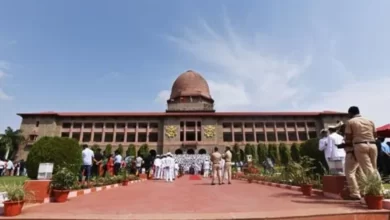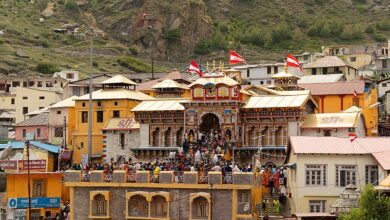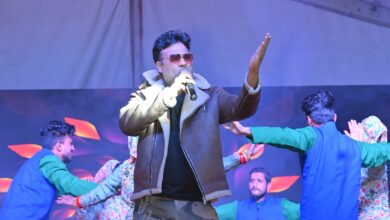Shradh and Tarpan in Vedic faith

According to the Vedas there are two movements of the soul after death. first, According to God’s justice, in a short time there will be rebirth and the second salvation, that is, the souls of good deeds, sorrow, Having attained freedom from birth and death, become situated in God and remain in the bliss of God for a long time. Shradh in the event of the soul being reborn or after attaining salvation, The rituals like tarpan etc. prove to be futile. In such a situation, the question arises that what is Shradh and Tarpan? There are two distinctions of Pitru Yagya in Vedic philosophy – Shradh and Tarpan.
In the Vedic system, while prescribing five types of yagyas, these five yajnas have been asked to be performed by every householder every day. These five types of Yajnas include Brahma Yagya, Dev Yagya, Atithi Yagya, Balivaishvadev Yagya and Pitru Yagya. These are called Panch Mahayagyas. Worshiping God according to Vedic belief is Brahmayajna. To improve one’s conduct in order to attain Dharma, Artha, Kama and Moksha and to be true, formless, almighty, just, merciful, unborn, eternal, immutable, eternal, unparalleled, sarvadhar, sarveshwar, omnipresent, omnipresent, ajar, immortal, abhay, nitya Worshiping the One God, the Holy One and the Creator, giving thanks to Him and following Ashtanga Yoga is Brahmayagya. Performing Agnihotra is a divine sacrifice. Agnihotra for the purification of the root god i.e. sky, water, air, earth etc. Without taking anything from anyone, if we give something to the Gods who always give everything to everyone, or give something, then these Gods give it back to us manifold. Same thing happens in Agnihotra also.
Due to this, the worship of the root gods means protection of the Vedas and worship of God is also done. To honor the Vedic scholars, satyopadeshk and guests as much as possible with service, food, money etc. is a guest yagya. To do good to the sick, poor, ant, dog, cork etc. with medicines, money, food etc. is Balivaishvadev Yagya. To give hospitality and service to living mother, father, teacher, guru, mother-in-law, father-in-law, elder brother, etc. is called Pitru Yagya.
According to Vedic scholars, performing Shradh of one’s dead ancestors, taking out tarpan etc. in the current Pitru Paksha, rituals are against the Vedas. According to the Vedas there are two movements of the soul after death. First, according to God’s justice, rebirth in a short time and secondly, attaining salvation, that is, the souls of good deeds, after getting rid of sorrow, birth and death, become situated in God and live in the bliss of God for a long time. In the event of the soul being reborn or after attaining salvation, the rituals like Shradh, Tarpan etc. prove to be futile. In such a situation, the question arises that what is Shradh and Tarpan? There are two distinctions of Pitru Yagya in Vedic philosophy – Shradh and Tarpan. Shradh means the name of Shrat Truth is – Shratsatyam dadhati yaya kriya sa shradha shraddhaya yatkriyate tachhradham. That is, the action by which truth is received is called Shraddha and the action done with faith is called Shradh. While explaining the word Tarpan it has been said – Trpayanti tarpayanti yen pitan tattarpanam which means – the name of that action is tarpan. But it is for the living, not for the dead.
According to the worldly belief, the parents who give birth and take care of them after suffering many hardships should not be left alone in old age. They must do Shradh and Tarpan, they should be served. They should not be hurt. This is the duty of every child and it is also a religion. Shradh means embodiment of truth or that which is worn with reverence. Shradh is the name of serving a scholar, guest, parent, teacher etc. Thus it is proved that Shradh can be performed only by living parents, teachers, gurus etc., and not for the dead. The description about the Shradh of the dead is found only in the mythological texts. The name of the deceased Shradh is not even mentioned in the Vedic texts. In the Vedas, in very clear words, the service of parents, teachers and elders has been ordered-
Anuvratah pituh sons quantity bhavatu samnah. -Atharvaveda 3- 30-2
That is, the son should be the one who acts according to the father and treats the mother with a good heart.
By giving vartan for the deceased, performing Shradh of the deceased by this method, they will reach the deceased, there is no such legislation or description in any Veda Mantra. According to the Vedas, Shradh can be done only for the living and not for the dead. The paternal noun is also of the living, not of the dead. The word Pitra is derived from the root Pa Rakshana. Hence Pitra means foster, nurturer, protector and father. Only living parents can protect and nurture, what if the dead will protect others, they cannot even protect themselves. Therefore, considering the dead as ancestors is false and misleading. From the study of Vedas, Ramayana, Mahabharata, Gita, Puranas, Brahmanical texts and Manusmriti etc. Yajurveda says-
Upahuta: Pitra: Somyaso Barhishesu Nidhishu Priyashu.
Ta aa gamantu ta ih sruvantvadhi bruvantu te avantvasmana.. -Yajurveda 19-57
That is, on being called by us, the ancestors who drink the Somaras should come to the sacrifices of love and our koshas. The ancestors should listen to our words, teach us and protect us.
It is clear from this mantra that the ancestors are alive and not the dead, because the dead cannot come, hear, preach or protect. In Atharvaveda it is said-
Achaya janu dakshinto nishadyedam no havirbhi granantu visve. , -Atharva Veda 18-1- 52
Meaning- O fathers! Take this grain of ours by kneeling down and sitting on the right side.
In this mantra everyone is asked to sit on the south side of the altar with their knees bent. The question arises, do the dead have knees? Can he sit on his knees? No. It becomes apparent from this description that the ancestor of living beings is the noun. According to Valmiki Ramayana 18/13, the elder brother, the one who walks the path of religion, the father and the giver of knowledge – these three ancestors should be known. According to Chanakya Niti 5/22, the giver of knowledge, the giver of food, the protector from fear, the giver of birth, they are called the ancestors of human beings. According to Shvetashvetaropanishad 5/10, this soul is neither female, nor male, nor is it impotent, but is targeted by the body it takes in. How can it be a paternal noun after death? Even if the deceased Shradh is accepted due to ill-wishers, there will be a possibility of many faults due to it. The first fault is Kritthani i.e. someone does the karma and the result will be to be received by someone else. That is, someone works hard and someone else gets the fruits. If the son donates and the fruits are given to the parents, then the blame will come. The second defect would be that of Akritaabhyagam i.e. the action is not done and the result is obtained.
In the justice of man, it may happen that one does the work and the result may be received by someone else, but this cannot happen in the justice of God. According to mythological belief, because of offering the fruit, one gets it, but this is untrue and it has never been seen to happen. If the son kills a person and offers his fruit to the father, will the father be hanged? If this is possible then people will start taking the resolution of sin only in the name of priests and pundits. Even due to these defects, the deceased Shradh is not proved. Thus it is clearly proved that Shradh can be performed only by living parents. Maharishi Dayanand Saraswati has also accepted the Vedic principle as the unalterable principle and said that the deceased Shradh is non-Vedic and unscriptural. It is not proved by logic.





